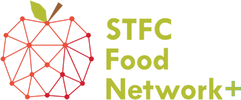 A novel project combines drone technology, space science and reproductive biology to detect when cows are ready to be inseminated. Led by Niamh Forde, University of Leeds. If you’re a dairy farmer, one of your biggest concerns is making sure your herd gets pregnant on time. Dairy cows only produce milk following successful calving, but there is a narrow window of time when a farmer needs an animal to become pregnant. Missing these opportunities can quickly generate losses of hundreds of pounds per cow, due to disrupted milk production and having to pay for multiple rounds of artificial insemination. Consequently, dairy farmers have to be on the lookout for when animals display ‘heat’: behavioural and physiological signs that cows show just before ovulation. “Sometimes if you go out early in the morning, you can literally see the steam rising off the cows that are in heat, hence the name” says Niamh. “Unfortunately, most of the time the signs of heat are much more subtle and can be very difficult to see”. Current detection methods are far from perfect and can be very time consuming, for example observing mounting behaviour in a group of females. Given that a typical dairy herd can be over a hundred-strong, the need for a quick, accurate and affordable solution is clear. It seems a problem made for Niamh, who has studied the molecular and physiological events of early pregnancy in a wide range of animals including pigs, cattle, mice, humans and even marsupials. But she arrived at her solution purely by chance. After a colleague couldn’t attend the STFC Food Network Sandpit event in February 2018, Niamh went in their place and “got chatting to the people on my table while charging up my laptop.” One of them was Stephen Serjeant, based at the Open University who designs algorithms to analyse temperature differences in distant galaxies. “I thought ‘If you can measure temperatures in galaxies so far away, then perhaps we could use it to detect heat in cows!’” she says. On finding that her other neighbour, Anthony Brown (Durham University) was an expert in drones, everything suddenly came together. The basic idea is to scale down Stephen’s pattern-recognition algorithms to detect the distinct temperature changes in individual cows during heat. Once perfected, they hope to combine the program with drones fitted with infra-red imaging devices that can sweep across herds while they are out at pasture. A truly interdisciplinary project, it requires the expertise from all three researchers to be successful. Currently, they are demonstrating proof of concept using a static device mounted indoors. “We still need to work out how many data points we need for each individual cow so that we can accurately detect signs of heat” says Niamh. “This is where Stephen’s skills really come into their own”. Once optimised, they intend to move to using drones to conduct an outdoor experiment later this year with a herd of dairy cows synchronised to ovulate at a specific time. “This should give us a baseline set of data that we can use to refine the algorithm so that we get consistent outcomes” Niamh says. A particular benefit about this technique is that it can be applied to farms with very different management systems, from small cooperatives in Sub-Saharan Africa to a high-end operation in the UK or USA. “Speaking to farmers has shown me that they are generally keen to use methods that are based on a physiological process, as it’s something they see occurring in their animals and understand”. If successful, Niamh envisages that this method could easily be applied to other areas, including reproductive management in conservation parks and zoos. It’s been quite a journey for a self-confessed city girl: “My family think it’s hilarious that I now work with the farming industry as I grew up slap-bang in the middle of Galway city on the Irish west coast” Niamh says. Niamh moved to Leeds to start her own lab three years ago and since then has said that being part of the STFC Food Network+ proved invaluable in helping her to integrate into the food-science community. “The Food Network+ has allowed me to interact with people I wouldn’t necessarily have met otherwise, such as Stephen and Anthony, and made what I thought were ‘really difficult’ sciences such as astrophysics more accessible. It gives me the confidence to ask ‘stupid questions’ which often spark new ways of thinking about my own research”. It is a fitting illustration of how the network creates opportunities for researchers from very different disciplines to design novel solutions towards more sustainable food systems. For Niamh, it’s been a very rewarding collaboration. “Reproductive biology is what I’m super-interested in and it’s been wonderful to use my fundamental knowledge towards helping farmers make a better living” she concludes. “The uterus is just the most awesome organ!”
0 Comments
Your comment will be posted after it is approved.
Leave a Reply. |
AuthorJune 2024 - Archives
June 2024
Categories |
- Home
- Webinars and Events
- About the SFN+
- News
- Blog
- Expert Working Groups
- Funding
-
Publications
- Bioeconomy positioning paper
- SFN+ 5th Annual Conference
- OMM Policy Report
- ‘Multi-Stakeholder International One Day Workshop on Organic Agri-Food Value Chains for Net Zero’ Report
- SFN 2050 UK Net Zero Food report
- Sustainable Cold Food Chain Booklet
- Food Sensing Technologies for Safe and Nutritious Food
- Sustainable urban and vertical farming
- Projects
- Join/Contact Us

 RSS Feed
RSS Feed


